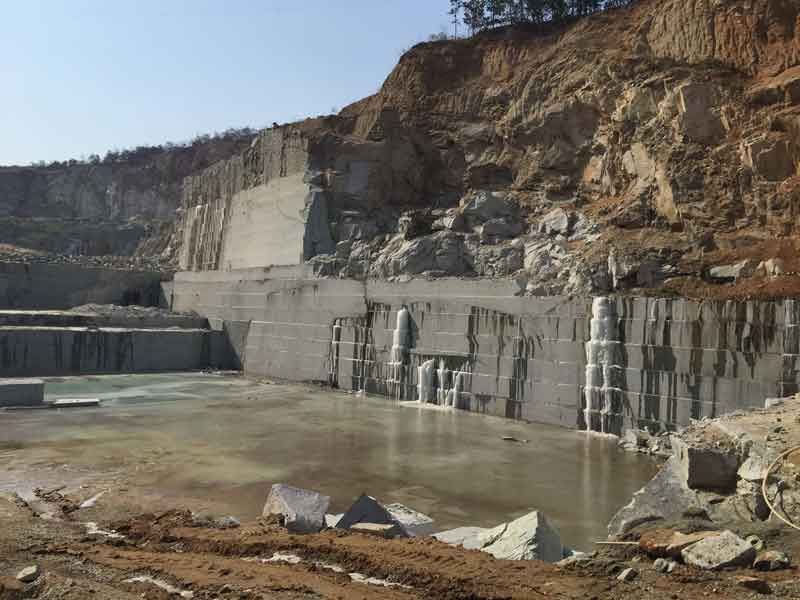Uncovering the Elegance of Granite Quarry in South Africa Marvels
Uncovering the Elegance of Granite Quarry in South Africa Marvels
Blog Article
Discovering the Rich Background and Lasting Practices of Granite Quarrying
As we stand on the precipice of discovering the complex tapestry of granite quarrying, a journey via time reveals not simply the physical act of removing stone yet also the social and historic importance woven right into the very material of this technique. From the ancient beginnings that laid the structure for contemporary quarrying techniques to the lasting methods that are forming the future of this market, each chisel mark on granite surface areas narrates waiting to be discovered (granite quarries in south africa). The tradition of granite quarrying extends far past plain extraction; it is a testimony to human ingenuity, durability, and the long-lasting attraction of this stunning rock
Old Origins of Granite Quarrying
Dating back to ancient people, the technique of quarrying granite has actually been an indispensable part of human background and building innovation. The earliest proof of granite quarrying dates back to ancient Egypt, where substantial pyramids and intricate sculptures were crafted from this sturdy stone. The Egyptians utilized primitive tools to extract granite blocks from quarries, showcasing the significance of this material in their significant buildings.
Progressing in history, the Greeks likewise made considerable contributions to the quarrying of granite. The Greeks utilized granite in different building wonders, such as holy places and sculptures, demonstrating their skill in shaping and carving this sturdy stone. The Romans even more refined the strategies of quarrying granite, using innovative devices like chisels and hammers to extract and form granite for their legendary frameworks.
Via the centuries, the method of quarrying granite has developed, with modern technologies enhancing efficiency while keeping the ageless charm of this natural rock - granite quarries in south africa. From old people to contemporary contractors, the legacy of granite quarrying continues to form our world
Development of Quarrying Techniques
The development of quarrying methods has been noted by a constant progression towards better efficiency and accuracy in drawing out granite. From the rudimentary techniques used by our ancestors to the sophisticated modern technologies used in modern-day quarrying procedures, the industry has actually undertaken considerable advancements. Early quarrying strategies included manual work with fundamental tools such as knives, hammers, and wedges to extract granite blocks from the planet. As people progressed, methods like fire-setting and primitive explosives were introduced to facilitate the extraction procedure.
Developments in computer-controlled devices and 3D modeling have enhanced quarrying operations, leading to very little environmental impact and enhanced sustainability methods. As the demand for granite continues to rise, the evolution of quarrying techniques remains essential to meeting industry requires efficiently and sustainably.
Cultural Importance of Granite
Granite holds an extensive social value across numerous people due to its enduring existence in architectural masterpieces and prized monuments. From the stunning pyramids of Egypt to the intricate makings of the Angkor Wat holy place in Cambodia, granite has actually been a material of choice for expressing splendour and long life in social heritage. In old Rome, granite columns embellished temples and public structures, representing toughness and durability. The cultural value of granite expands beyond its physical qualities; it personifies resilience, security, and eternity, making it a symbol of withstanding heritages and traditions.

Lasting Practices in Quarrying
In the middle of the rich history of granite quarrying and its social value exists an expanding emphasis on sustainable techniques within the sector. As ecological recognition and worries concerning source depletion have increased worldwide, the quarrying industry has increasingly accepted lasting techniques to decrease its effect on the environment and bordering communities.

In addition, recovery and recovery of quarry websites post-extraction are indispensable to lasting methods. By bring back quarried areas to a natural or helpful state, such as producing wildlife habitats or leisure spaces, quarriers can balance out the environmental footprint of their operations and contribute positively to the local community.
Tradition of Granite Quarrying
With a historical backdrop soaked in workmanship and commercial progression, what withstanding influence has granite quarrying left on the landscape of contemporary society? The legacy of granite quarrying transcends plain removal methods; it has shaped building wonders, metropolitan landscapes, and social heritage worldwide. The resilient nature of granite has made it a preferred selection for monoliths, structures, and facilities, standing as a testimony to the skill and virtuosity of quarry workers across generations.
In addition, the financial footprint of granite quarrying can not be forgotten. The market remains to provide work chances and drive local economies in areas where granite extraction is widespread. It has also stimulated technological advancements in quarrying techniques and devices, leading to extra efficient and lasting practices.
In terms of sustainability, the heritage of granite quarrying includes efforts to minimize environmental effects via reclamation jobs and liable source monitoring. By balancing economic rate of interests with ecological stewardship, the sector strives to dig this make sure that future generations can proceed to profit from this enduring natural deposit.
Verdict

Report this page